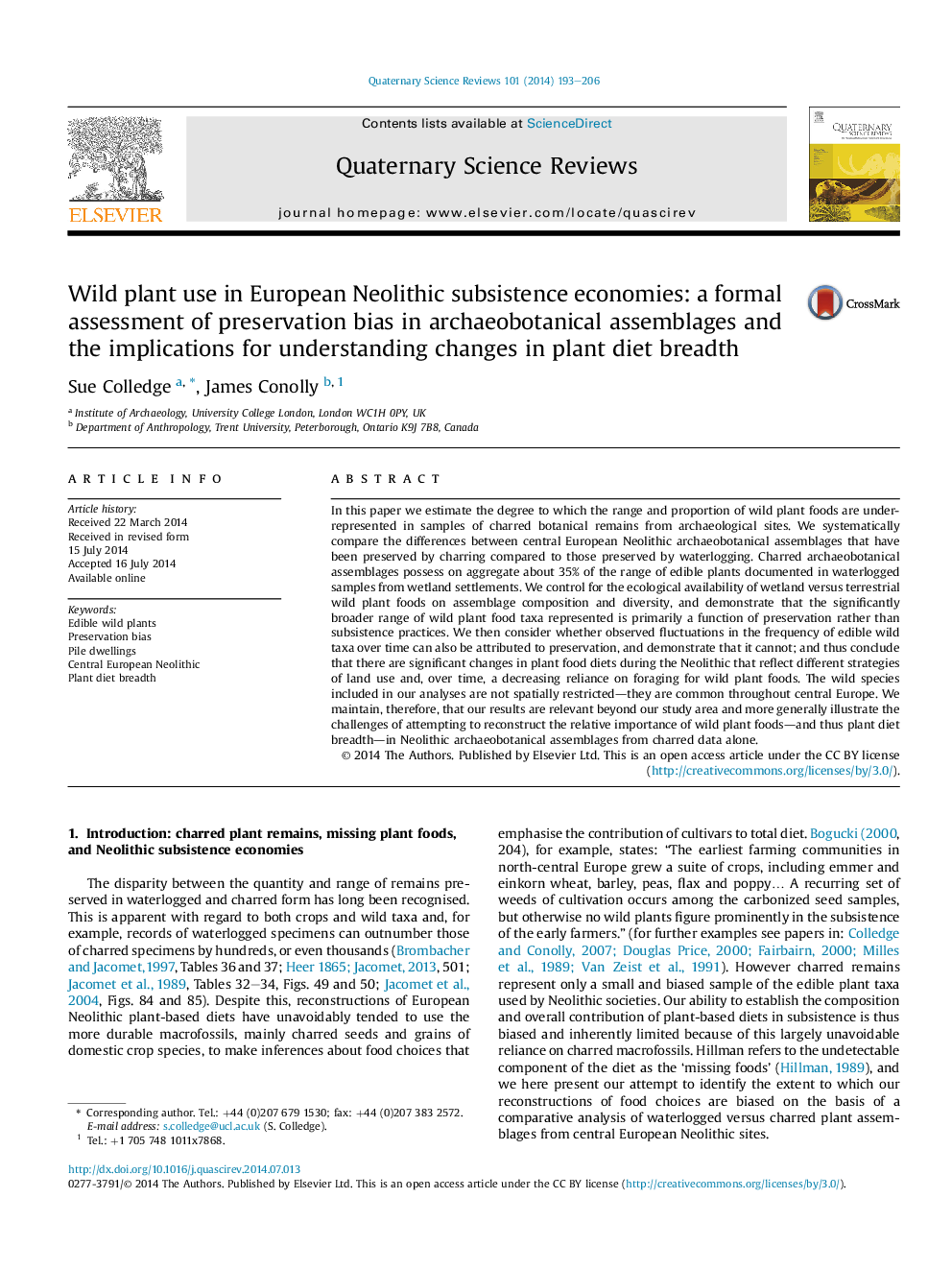| Article ID | Journal | Published Year | Pages | File Type |
|---|---|---|---|---|
| 6446176 | Quaternary Science Reviews | 2014 | 14 Pages |
Abstract
In this paper we estimate the degree to which the range and proportion of wild plant foods are under-represented in samples of charred botanical remains from archaeological sites. We systematically compare the differences between central European Neolithic archaeobotanical assemblages that have been preserved by charring compared to those preserved by waterlogging. Charred archaeobotanical assemblages possess on aggregate about 35% of the range of edible plants documented in waterlogged samples from wetland settlements. We control for the ecological availability of wetland versus terrestrial wild plant foods on assemblage composition and diversity, and demonstrate that the significantly broader range of wild plant food taxa represented is primarily a function of preservation rather than subsistence practices. We then consider whether observed fluctuations in the frequency of edible wild taxa over time can also be attributed to preservation, and demonstrate that it cannot; and thus conclude that there are significant changes in plant food diets during the Neolithic that reflect different strategies of land use and, over time, a decreasing reliance on foraging for wild plant foods. The wild species included in our analyses are not spatially restricted-they are common throughout central Europe. We maintain, therefore, that our results are relevant beyond our study area and more generally illustrate the challenges of attempting to reconstruct the relative importance of wild plant foods-and thus plant diet breadth-in Neolithic archaeobotanical assemblages from charred data alone.
Related Topics
Physical Sciences and Engineering
Earth and Planetary Sciences
Geology
Authors
Sue Colledge, James Conolly,
